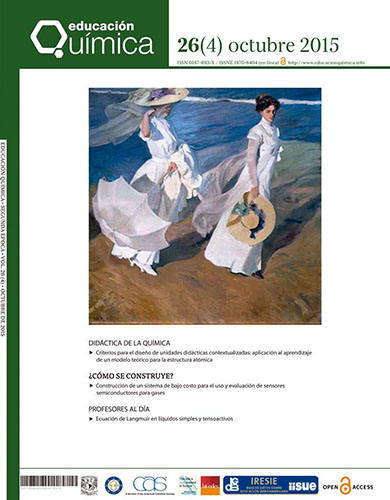Spontaneously resolving chiral cis-[dinitrobis(ethylenediamine)cobalt]X complexes (X = Cl, Br) from the Alfred Werner collection of original samples at the University of Zurich --- Alfred Werner’s missed opportunity to become the ‘Louis Pasteur’ of coordi
Contenido principal del artículo
Resumen
17 original crystals of [ -dinitrobis(ethylenediamine)cobalt]X complexes from the Alfred Werner collection of original samples of the University of Zurich were studied by single crystal X-ray diffraction revealing that the complexes with X = Cl, Br can undergo spontaneous chiral resolution upon crystallization. The main focus of this article was the chiral [ - and -dinitrobis(ethylenediamine)cobalt]Cl complexes, which crystallize from racemic solution in the space group P 21 mainly as synthetical twins enriched in one enantiomer, but to a small extent also as pure enantiomorphs. The twinning effect was recognized and correctly described by PhD student Richard Hessen of the Alfred Werner group (PhD thesis 1914). Richard Hessen eventually resolved the [ - and -dinitrobis(ethylenediamine)cobalt]Cl complex by the conglomerate salt resolution method. Based on the availability of the pure [ - or -dinitrobis(ethylenediamine)cobalt]Cl complex, he carried out seeding experiments, which proved that the [ - and -dinitrobis(ethylenediamine)cobalt]Cl complexes can be enriched to a great extent in one enantiomer by spontaneous chiral resolution. Already in the period of time from 1900 to 1904, various PhD students of Alfred Werner’s group (Adolf Grün, Edith Humphrey, Ernst Zinggeler, Heinrich Schwarz, and Paul Larisch) prepared the [ - or -dinitrobis(ethylenediamine)cobalt]Cl complex. Adolf Grün and Edith Humphrey have prepared enantiomerically enriched and rarely also enantiomorphic crystals of the [ - or
-dinitrobis(ethylenediamine)cobalt]Cl complex and could have separated crystals by manual crystal picking. Admittedly due to the crystal habits this would have been a difficult endeavour, but this ‘Louis Pasteur method’ was apparently not taken into consideration. Still in a cautiously sounding note one could state that Alfred Werner and his group had missed by this omission the opportunity for spontaneous chiral resolution of the [ - and -dinitrobis(ethylenediamine)cobalt]Cl complexes in the period of time from 1900 to 1904. In addition, making this early chiral resolution story even more incredible, we found that Heinrich Schwarz and Paul Larisch applied in these early days of coordination chemistry the S-(D-,d-)camphorsulfonate anion to achieve the separation of the cis- and trans-isomers of the [dinitrobis(ethylenediamine)cobalt] complexes. They did not approach the potentially possible chiral resolution of the [cis-dinitrobis(ethylenediamine)cobalt]+ cation. But based on their syn- thetic procedure they did indeed accomplish chiral resolution of the cis-isomer and prepared eventually a series of the chiral [cis-, -dinitrobis(ethylenediamine)cobalt]X salts; however all this was in an unintentional manner.
-dinitrobis(ethylenediamine)cobalt]Cl complex and could have separated crystals by manual crystal picking. Admittedly due to the crystal habits this would have been a difficult endeavour, but this ‘Louis Pasteur method’ was apparently not taken into consideration. Still in a cautiously sounding note one could state that Alfred Werner and his group had missed by this omission the opportunity for spontaneous chiral resolution of the [ - and -dinitrobis(ethylenediamine)cobalt]Cl complexes in the period of time from 1900 to 1904. In addition, making this early chiral resolution story even more incredible, we found that Heinrich Schwarz and Paul Larisch applied in these early days of coordination chemistry the S-(D-,d-)camphorsulfonate anion to achieve the separation of the cis- and trans-isomers of the [dinitrobis(ethylenediamine)cobalt] complexes. They did not approach the potentially possible chiral resolution of the [cis-dinitrobis(ethylenediamine)cobalt]+ cation. But based on their syn- thetic procedure they did indeed accomplish chiral resolution of the cis-isomer and prepared eventually a series of the chiral [cis-, -dinitrobis(ethylenediamine)cobalt]X salts; however all this was in an unintentional manner.
Detalles del artículo

Educación Química por Universidad Nacional Autónoma de México se distribuye bajo una Licencia Creative Commons Atribución-NoComercial-SinDerivar 4.0 Internacional.
Basada en una obra en http://www.revistas.unam.mx/index.php/req.
